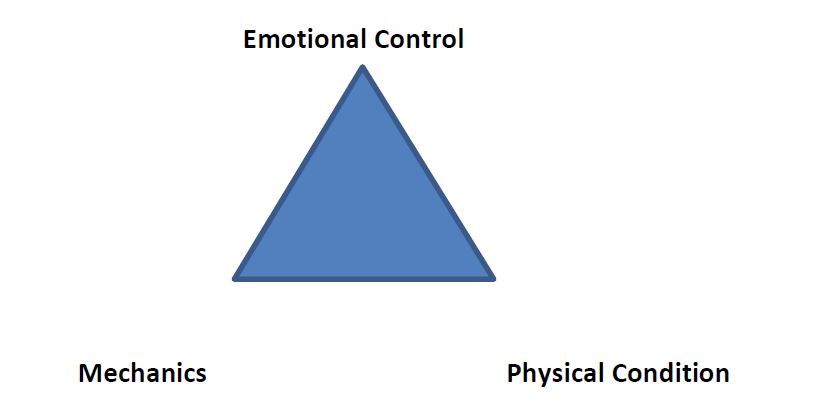The Use of a Post-Game Questionnaire as a Critical Tool to Assess Emotions
Consistency, discipline, talent, resilience, passion- to name a few- are essential pillars that guarantee the balance to become a good athlete. A softball pitcher should possess these and other features to be consistent in their pitching and build a solid sporting career. Fundamentally, I will focus my attention on three variables that I consider to be the foundation and support I have worked on in recent years:

Finding the vertex is what we are constantly working on to achieve the highest point of performance.
If a pitcher's performance is higher than average, he has probably reached the highest point in these three variables and will experience having control of the batters he faces, will be in control of the game and will be a pitcher who is dominant and consistent.
The mechanical part is constantly trained based on pitching drills that consist of a variety of exercises, with emphasis on error correction. Thus, routines are created and planning is made. Likewise, the physical condition of the pitcher is worked on through physical exercise procedures and training practices on a daily basis which are part of the general planning. All this procedure is necessary in order to achieve a good performance and to meet the sporting objectives set.
Constant and cyclic routines of these pillars have become habits in pitchers. The question is: Is as much time and importance dedicated to control of emotions as to mechanics and daily training practices? Is “control of emotions” even included in planning?
Based on my experience, I can point out that "control of emotions" is trained very little or practically not at all and is left at the mercy of the pitcher’s personal experience during their pitching career.
After constant trial and error, an equilibrium is reached after having travelled different paths.
The goal is to create the most efficient path so the pitcher can deliver all of their potential and not to be stranded in an emotional moment that does not allow for further growth, or that does not allow them to develop to their outmost potential. Emotions are transient states that come and go relatively quickly and are triggered by external stimuli (something we see or experience) or internal as a thought or a memory. If we recognize emotions and why they occur, we will be proactive and therefore we can move (pitch) controlling our thoughts and our body. To begin to understand and then work on "the control of emotions" I began to write down, with the assistance of a sports psychologist, a series of questions directed towards the emotional part that a pitcher goes though during a game, so as to have one more tool to understand the different emotional phases that a pitcher experiences.
This tool is surely one more among many and its result is not meant to be qualified. Its purpose is not to give a value to the answers given by the pitchers, but to find out which emotions relate to the different performances and why. This helps to create awareness of what happens when the pitcher repeats those patterns of behavior. Some of the emotions that the pitchers mention are: happiness, serenity, confidence, anger, frustration, exaltation, paralysis and anxiety.
What provokes these emotions? This series of questions became a commonly used post-game “exercise”, which was completed on-site by the pitcher.
The form consists of about 16 questions with the answer mode based on a scale of 1 to 10; 1 is the lowest score and 10 is the highest. This scale is to find a referential value in the responses. One of the sine qua non conditions is sincerity in the responses of each pitcher. Honesty is important since we use this to prepare for future games. The form contains a section where each pitcher can write and describes any observations he considers appropriate or useful.
Results: When evaluating and analyzing the forms, new questions appear into consideration, such as: Why did the pitcher suddenly lose control? Was the pitcher ready for the situation he had to face? Was the pitcher expecting a different action or help from the coach? After making a personal evaluation, the group meeting is the next step. There, with the serenity of not being "in situ" each answer is read and analyzed.
Following this procedure, a better knowledge of the action of each pitcher is achieved. It helps to identify whether the pitcher needs a different preparation, the factors that influence their performance during the game and thus to be able to get ahead and manipulate the course of action that is within the pitcher’s power.
Above all, the pitcher should know themselves and understand what is available for them, what they can master and what is beyond their domain.
The form has been implemented in the team of both major and junior pitchers of the Argentinian National Softball Team. We have taken it one step further to train the control of emotions.
Finding that vertex, that highest point between the mechanics of the pitching, the physical condition and the control of emotions is an exercise that is repeated in the search for excellence and any path taken to achieve it must be traveled with the greatest conviction.
Beto Guerrinieri



